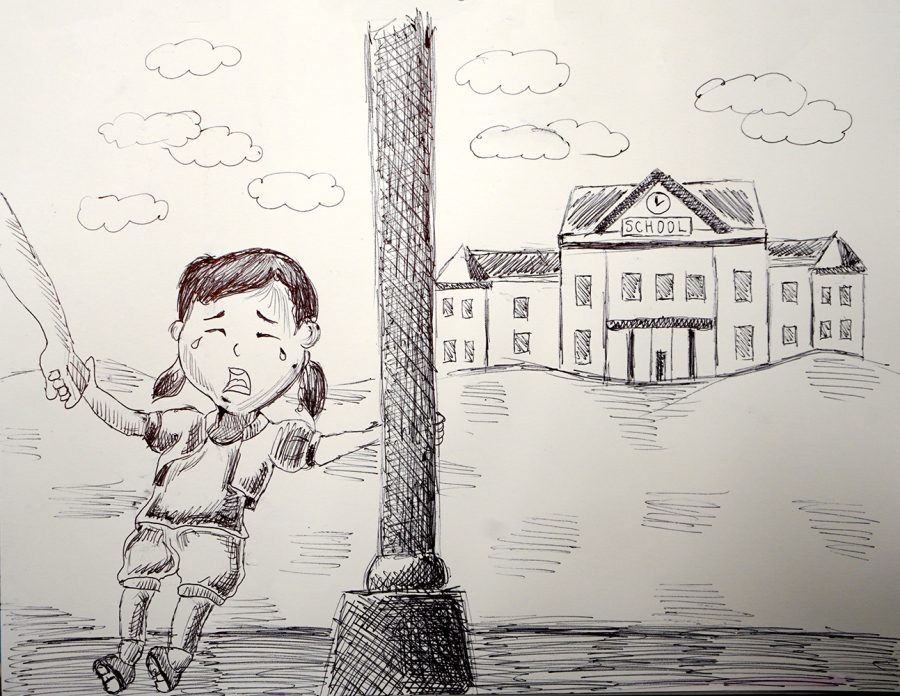Redistricting, Revisited
North Allegheny is making plans to redistrict once again. Here’s a perspective on redistricting from someone who’s been through it before.
Even when redistricting is administratively necessary, it must never be taken lightly. A child’s whole life revolves around their school and the people there.
In February of 2014, I walked into the North Allegheny Central Administration Office by my mom’s side. My stomach was in knots as I entered the conference room where that month’s school board meeting was being held.
I was upset. I was scared. And I was probably thinking something along the lines of, What if I have to leave all my friends behind? This isn’t fair.
My mom and I sat down somewhere in the rows of foldable chairs. The room was packed with parents and students, and a nervous chatter surrounded us.
Right on time, the meeting started. For about fifteen minutes, all the adults who seemed incredibly intimidating with their fancy suits and sophisticated vocabulary discussed PSSA scores. The screen displayed a half dozen statistics, all showing North Allegheny’s high percentiles. Every passing second that I stared at the bar graph felt like an eternity.
Finally, the School Board got to the main portion of the evening— redistricting.
Redistricting occurs when the school district draws new boundaries for its buildings, usually to balance out its population distribution. In 2014, North Allegheny redistricted fewer than 200 students.
I was one of them.
At the time, I was in fifth grade at Ingomar Elementary, which meant that, when this redistricting took effect, I would be starting my first year in middle school. If the proposal was approved, I would have to attend Carson Middle School with two other students I knew, while the rest of my friends continued on to Ingomar Middle School. My little brother also had to change schools and move from Ingomar to McKnight.
As one can imagine, the thought terrified me. Ingomar Elementary was a small school. There were only about sixty kids in my grade, and it felt like we all knew each other. They were the kids I had grown up with. Everything about Ingomar felt comfortable and safe, and I wanted that familiarity.
That’s why my mom and I, like many of the community members present, came to offer our opinion on the proposal.
It didn’t make a difference. The Board politely answered frustrated parent questions, patiently listened to impassioned student speeches, and nodded along. Later, the plan was approved, and suddenly I was faced with the task of having to be the new kid in school.
That was the first, and last, school board meeting I have ever gone to.
Quite honestly, I haven’t even thought much about that night, or the redistricting, in a long time. I went to Carson and was naturally nervous and overwhelmed. However, I eventually found my place. I met some of my best friends. Actually, the friends who are closest to my heart today are people I encountered at the middle school the district forced me to attend. Going to Carson probably was one of the best things that could’ve happened to me at that time.
Perhaps the biggest obstacle that came with the redistricting occurred when I went to high school. I was back with all my friends whom I knew so well a couple of years before. But, by the time I got to ninth grade, there was a disconnect. It felt like I was an outsider. I had known these people, but I didn’t any longer.
Regardless, I was lucky. My transition in sixth grade had gone as smoothly as it could have. That’s really the only reason it all worked out– pure luck.
So, I was content, and I forgot about how I was one of the students who had their educational lives drastically changed all those years ago.
But a lot of those feelings came stumbling back when I heard of North Allegheny’s new plan to redistrict for the 2020-2021 school year. It’s a fairly massive plan. Students from every elementary school will be affected, and some Marshall Middle School students will be moved to Ingomar.
My first reaction was to roll my eyes. The main reason redistricting was required again was because they moved barely any students in 2014. It wasn’t enough to have a major impact on the overall population— just a few individuals’ lives. So the plan that the school board claimed would last 5-7 years was failing.
Of course, no redistricting plan has any direct effect on high schoolers, so my inner eleven-year-old was very relieved that I wouldn’t have to go through the whole process again.
Still, my heart ached for the younger kids whose lives would be changing soon. I knew that, as positively as my experience turned out, it was terrifying and nerve-wracking. Being the new kid is scary for anyone. However, it feels worse when you don’t have a choice. Your parents didn’t move. You have the same address. Nothing else is different — just your school and your friends.
I remember that, after the redistricting was confirmed in 2014, most of the parents were told that this was a good thing for their child’s development, that being thrown into a new environment would make them more “well-rounded.”
That perspective shows exactly why some individuals in the district feel that flipping a student’s world upside down is okay. Sure, many administrators in the district acknowledge that such a sudden change can be enormously disruptive, but others think it will teach the child to adjust.
This is a dangerous path because if redistricting is fine– and, somehow, even helpful– it will not be approached with the necessary caution. In reality, any students who thrive would do so in spite of the change, not because of it. Most kids won’t be as lucky as I was. The majority will feel all the side-effects that being a new student can bring.
I understand that redistricting is necessary. North Allegheny is becoming incredibly overcrowded, and most schools are reaching their maximum capacity. However, it’s also the district’s responsibility to carefully handle the human aspect of it. The numbers are not just dots on a map. They’re kids who have built their entire idea of a normal life around their school.
For that reason, redistricting cannot be taken lightly. The proposals cannot be deemed “good enough” and passed. Forcing students to move schools every five years is far too often. Theoretically, that would mean that a student could be redistricted twice before they even reach high school.
That’s why it’s still important, as high schoolers, to pay attention. It may not be our building, but it is our district. It’s our community. It’s the little kids in our neighborhoods.
If the district must uproot its students, it has to be with a purpose. And that means the kids must be viewed as more than statistics. They must be seen as people with already established routines and friends and whole entire lives. Redistricting cannot be our primary solution to uneven population distributions.
It needs to be treated as a last resort, and it certainly should not be happening this often.

Kristen Kinzler is a senior at NASH who loves expressing her opinions and drinking excessive amounts of coffee and tea. When she's not writing or rewatching Supernatural for the fourteenth time, she can probably be found playing lacrosse, reading, or watching hockey. She plans to attend Bowdoin College next fall.



Jaime Martinez • Oct 18, 2019 at 9:53 pm
I totally invite you to read this year’s proposal on redistricting, found on the NA homepage. One thing that struck me as an improvement from the last redistricting process was the “grandfather clause” they’ve proposed for fourth graders transitioning to fifth grade; I think the school board’s really taking steps to ensure that kids are eased into it and are treated as “more than just statistics.” However, it’s been interesting to note the influx of people moving into the NA area (highest enrollment in NA’s history), and although redistricting is a hassle and can be quite annoying to many families, I see it as justifiable. There are kids at some of our schools having to physically walk outside to outdoor classrooms because there are not enough classrooms for the students inside the actual building, and these processes allow for a better learning environment for all students. I loved reading your perspective, great article!